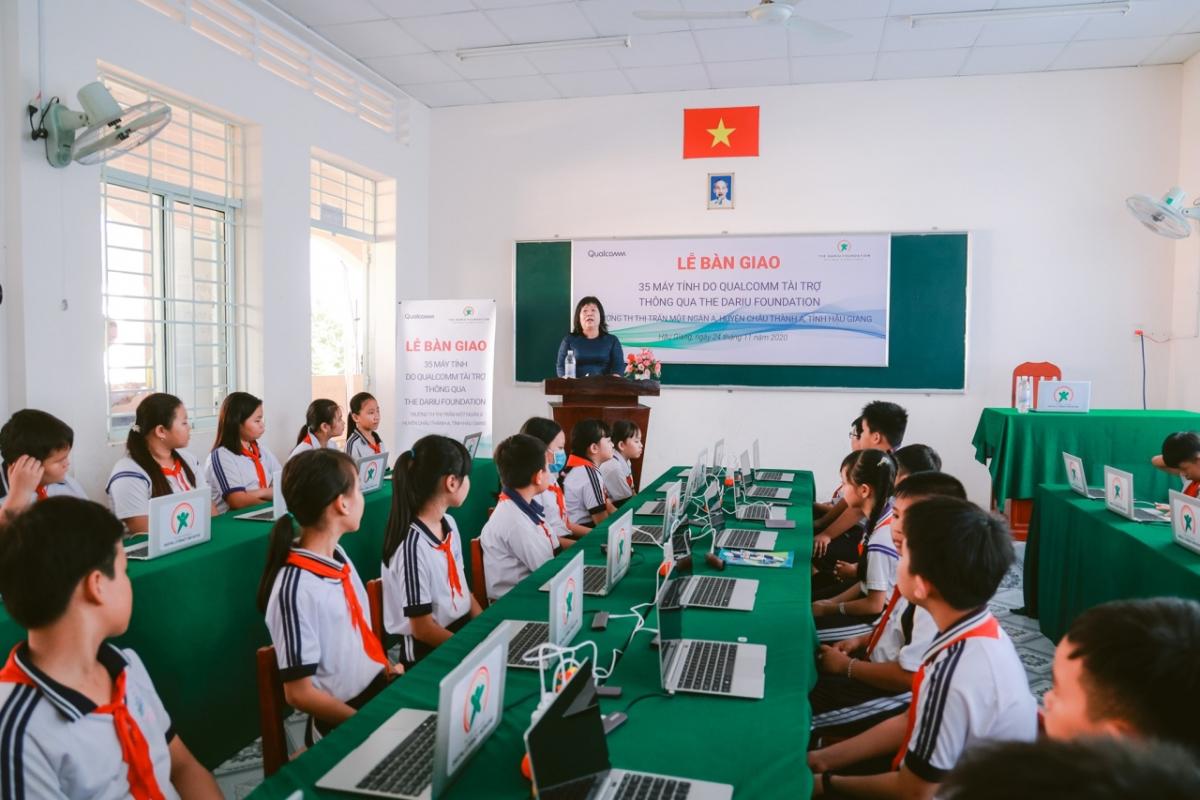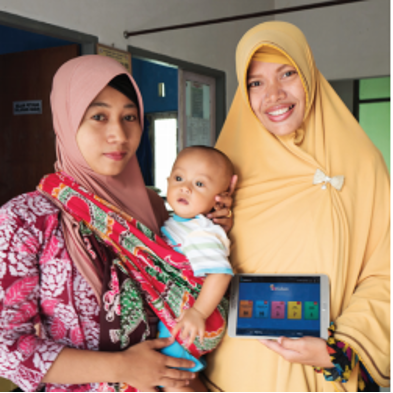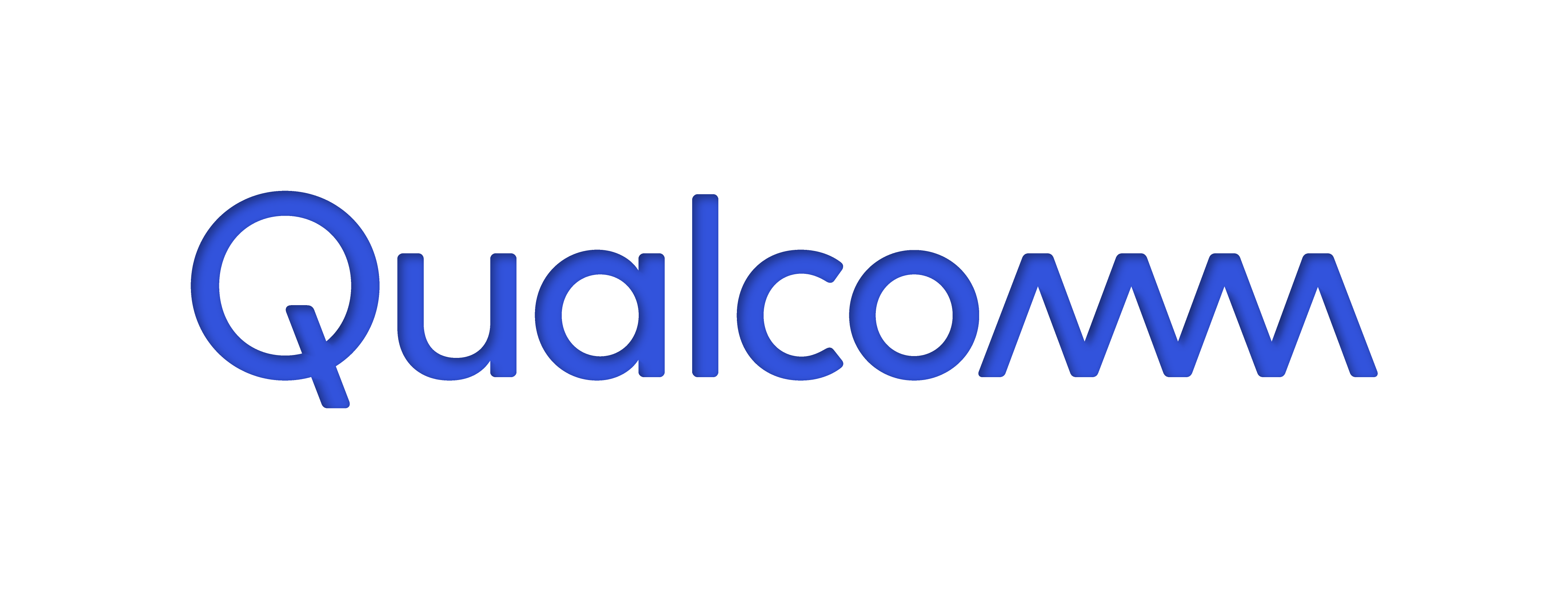Qualcomm Wireless Reach
As featured in Qualcomm's 2020 Corporate Responsibility Report
Wireless Reach brings advanced wireless technologies to people and communities who need it most. These programs demonstrate pioneering uses of our Company’s mobile innovations to help drive human and economic progress in underserved areas globally.
We’re improving lives with sustainable programs that enhance the delivery of healthcare, enrich teaching and learning, foster entrepreneurship, aid in public safety and improve the state of our environment. Our programs have benefitted more than 20 million people in 48 countries on five continents since the program's inception in 2006.
Our success is the result of collaborations with more than 650 partners, including non-governmental organizations, universities, government institutions, nonprofits, development agencies and other private sector companies.
The COVID-19 pandemic has impacted people’s lives in ways that were previously unimaginable. Along with the hardships have come great opportunities for innovative, sustainable solutions that use advanced mobile technologies to address the new needs presented by the pandemic. Since its founding, Wireless Reach has been working closely with organizations to address some of society's biggest challenges head-on. Our approach during the COVID-19 crisis was no different, in fact, in many instances, we accelerated social innovation to new heights to ensure students continued receiving high-quality education, healthcare-related demands were met, and women-led ventures remained open for business.
Enabling remote learning
United States: STEAM Mobile Learning
School closures due to the COVID-19 pandemic drove many K-12 education leaders to quickly adopt e-learning from home to ensure continuity of learning for students. However, most students and teachers weren’t prepared for the change.
Data collected by Project Tomorrow, an educational nonprofit supporting innovative uses of STEM resources, during the 2018-19 school year shows that just 17 percent of classroom teachers said their school assigned mobile devices for students to use at home and in school. Many students and teachers went into remote learning lacking familiarity with the strategies, tools and platforms that facilitate these new learning processes.
School district leaders nationwide have made herculean efforts to acquire and provision tablets and connected PCs for student use at home. However, according to a Project Tomorrow poll conducted in April 2020, over half of district leaders estimated that 15 to 50 percent of their students lacked adequate Internet connectivity at home to support remote learning.
With help from Wireless Reach, 5th grade students and their teachers in Williamsburg, Kentucky, a small rural community nestled in the foothills of Daniel Boone Country, were already fully prepared for distance learning when their school building closed in mid-March.
Funded by a grant from Wireless Reach, these students and teachers have been using tablets enabled by our technologies to support learning in school and at home every day since September 2019. Each tablet includes a data plan that students can use at home to connect with their teachers and classmates and to access online learning content.
The program also equipped teachers with best practices for integrating the tablets into everyday instruction. From using a mobile application on their tablets to explore constellations in the night sky to engaging their families with their virtual science labs, learning has not stopped for these students. Working collaboratively with University of Kentucky and Southeast/South-Central Educational Cooperative, this program is focusing efforts in preparing the next generation of mobile-ready teachers.
Enabling mobile healthcare
Brazil: Green & Yellow Blood Project
Steady blood donation is a necessity during normal times. During the pandemic, it has been critical. Health institutions globally are facing blood shortages due to social isolation measures enacted to slow the spread of COVID-19.
Brazil has consistently had one of the world’s highest number of confirmed COVID-19 cases according to John Hopkins University of Medicine’s Coronavirus Resource Center.
Normal conditions for blood donation are incompatible with health regulations during COVID-19. Beds are close together. Walk-in wait times can build up with large groups congregating in small waiting rooms. Medical personnel are in close quarters with each other and donors for hours at a time. Giving blood remotely is not an option.
The Green and Yellow Blood Project provides an opportunity for donors to take action by donating blood to those who need it. Through coordination with the Brazilian Soccer Federation, Brazilian Association of Hematology, Hematology and Cell Therapy, and Association Paulista of Medicine, blood donation events are now being held in soccer stadiums. The new venue allows plenty of space between beds and waiting areas, lowering health risks to donors and healthcare workers.
In support of the Green and Yellow Blood Project, Wireless Reach, in collaboration with MTM Tecnologia and ClearTech, launched a free mobile app that’s designed to promote and facilitate safe blood donation. The app provides users with alerts about donation events, information on donation criteria and the ability to schedule appointments during events. The app offers free data connectivity to users. Healthcare workers using the app also have access to a website that confirms appointments and allows them to send messages directly to donors. From May to September 2020, the app was downloaded more than 35,000 times, and more than 3,800 users have officially registered. To date, the events brought a total of 1,646 blood bags collected, impacting more than 6,500 patients in need.
Indonesia THRIVE
For millions of people in emerging regions, frontline health workers (FHWs) are the first and often only point of contact for healthcare. FHWs form the backbone of the health system, especially in resourceconstrained environments which have shortages of trained physicians and nurses.
In Indonesia, FHWs include midwives, nutritionists, vaccinators, early childhood development professionals and family planning field workers. All rely on data from paper-based health registers. These paperbased systems hamper communication, coordination and resource-sharing across all levels of Indonesia’s decentralized health system.
The THRIVE program, supported by Wireless Reach, demonstrates how a digital registry system known as Open Smart Register Platform (OpenSRP) can reduce maternal and child morbidity by improving FHW efficiencies, healthcare services coverage, continuity and quality of care, data quality, and timeliness of Reproductive, Maternal, Newborn and Child Health interventions. THRIVE is a public-private partnership originally launched by Wireless Reach, World Health Organization, Harvard T.H. Chan School of Public Health, Summit Institute of Development, Ona Systems, and District Governments across Indonesia.
OpenSRP combines data collection, client management and reporting workflows into one linked mobile interface and allows health workers to form an integrated care team. Participating FHWs use tablets powered by the Snapdragon platform and pre-loaded with midwife, vaccinator, nutritionist and early childhood development professional applications. All participants receive training in the use of the technology.
The technology features facial recognition of patients, allowing FHWs to rapidly pull up a client’s health record through a point-and-click photo; real-time data sharing to enable FHWs to coordinate efficiently; active feedback and coaching for improved provider performance and responsiveness; and SMS texts for service reminders and health promotion to increase on-time services.
More than 55,000 mothers and children and 180 FHWs in 111 villages have benefited from this program. Across all villages in the preliminary research pilot, use of OpenSRP has, on average, increased coverage rates for ante-natal care, post-natal care and child immunizations by 25 percent; improved quality of care and timeliness of service delivery by 22 percent; and led to a 27 percent decrease in maternal and child morbidity. The program began in 2016 on the Indonesian island of Lombok and has since scaled to many other districts across Indonesia.
Enabling remote business operations
Philippines: Hapinoy Mobile Microbusiness Hubs
In the Philippines, sari-sari stores are the last-mile supply points for their communities. They function as a neighborhood’s shared pantry, carrying household needs in small, daily doses. Many of these shops are owned by women microentrepreneurs called Nanays (Tagalog for ‘Mother’).
When the Philippines locked down due to the spread of COVID-19, nearly all businesses, including sari-sari stores, closed their doors. Supply chains for grocery items were disrupted, making it difficult for sari-sari store owners to restock their shelves. Store owners also faced dwindling finances as people lost their jobs en masse and communities lost purchasing power.
Normally, MicroVentures Inc., primary partner in the Hapinoy Mobile Microbusiness Hubs program, supported by Wireless Reach, provides participating Nanays with in-person training, linkage to capital, business opportunities, technology enablement and community-building to help them grow their businesses. When COVID-19 hit, the program pivoted toward an all-digital approach for recruitment, training, on-boarding and ongoing engagement. The digital approach enabled Hapinoy to continue supporting and engaging over 5,000 sari-sari store owners so they could navigate and adapt to the realities brought by the pandemic.
The program created educational content to support the Nanays to navigate the new normal, operate with better safety protocols and increase their economic resilience. The program also supported store owners —through a combination of Facebook Chatbots and the BizMo mobile app— to continue accessing microfinancing opportunities and purchase fast-moving consumer goods to stock their stores from the safety of their homes. Nanays post their goods and services on social media to reach more customers, conduct transactions through mobile wallets and generate additional income through digital bills payment and online payment services.
To learn more about Qualcomm’s 2025 goals and ESG performance in 2020, access the full report here



